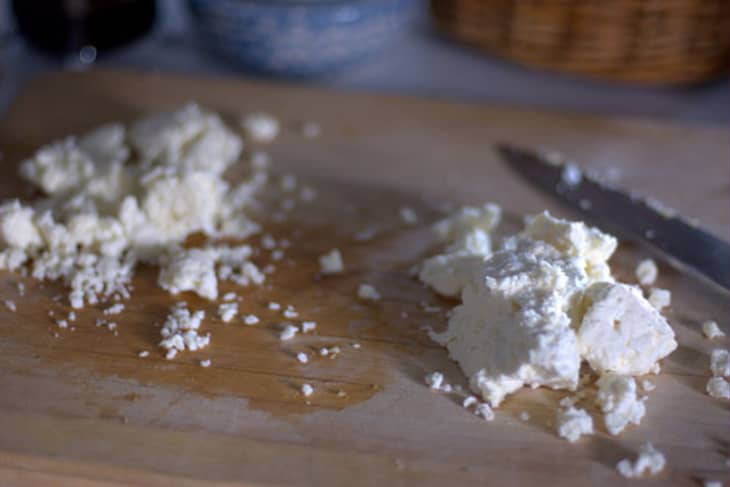The Cheesemonger: All About Feta
Stop right there. Before you skip over this post because you (like many others, we’re afraid) have minimal interest in feta, think again. Ubiquitous, yes, but don’t let that tamper with your impression of feta’s gustatory potential. If you think about it, you’ll realize that feta embodies some truly intriguing dualities: it’s briny yet milky, aged yet young, mild yet lingering. And when paired properly, these properties can act as serious support for some underlying qualities in your foods.
Like all well-recognized cheeses, feta appears in varying degrees of quality. Try buying feta at a specialty cheese shop rather than your local Safeway or Albertsons. Or better yet, seek them out at your farmer’s market. One of our favorites in the New York area is a raw milk sheep feta from 3-Corner Field Farm, which you can find at the Union Square Greenmarket.
Most fetas are aged from two to twelve months, with the assertive, briny factor increasing with age. If you want to suppress that kick, soak your block in a mixture of half water, half milk, for about an hour before you want to eat it.
We like that raw milk versions are available, because even if aged for six or more months, feta maintains a fresh, young quality, which are two traits you normally don’t see in raw milk cheese because of aging requirements.
Some of our favorite ways to eat feta:
- Grill or roast zucchini and sprinkle chunks of feta on top while still warm. Top with freshly chopped mint.
- Slice it from your block and alternate on a plate with slices of preserved lemons. Drizzle with olive oil and serve with baguette.
- Serve with rustic crackers, marcona almonds, and a super-fragrant, mildly hoppy IPA.
- Make ground lamb burgers and stuff a walnut-sized piece inside before grilling as an easy alternative at your next bar-b-cue. Feta makes a great melter.
- Try it alongside your favorite spring vegetables: On top of chilled pea soup, in a salad with asparagus, or made into a creamy cheese dip for artichokes.
- In a pasta, with watermelon, and on pears.
- Do as the Bulgarians do: Slice some on top of your breakfast cereal! (In the interest of full journalistic disclosure, we have to admit that this has yet to be tried.)
Important points to keep in mind:
- Never buy pre-crumbled feta! The more industrial the brand, the more likely you’ll find feta in this form.
- If you buy feta in a brine, try to maintain that brine by replacing the water. If you want to emulate the brine itself, use a solution of one part kosher salt dissolved in one part water. It should be submerged in some sort of liquid to limit its exposure to air, which would otherwise cause it to dry out and turn sour.
- Feta should last for several months, but if you have to question whether or not its still good, it probably isn’t. Trust your instincts!
- While most feta is aged in tins, you should seek out barrel-aged feta, the porous and permeable nature of which allows for a flavor development similar to wine.
- Note the milk type and taste test to see what you like. Most fetas we see in the States are Greek (sheep, goat, or a combination), Bulgarian (goat), or French (sheep).
- Another way to store feta is in olive oil. Perfect for salads.
Have any more ideas? Share with us!
Good recipes with feta
• Velvety Broccoli and Feta Pasta
• Pasta With Greens and Feta
• Broccoli and Feta Pasta Salad
(Image: Flickr member wickenden, licensed under Creative Commons)
